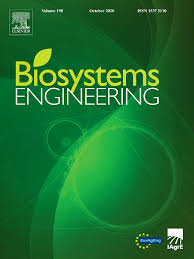Document type : Scientific review published in Biosystems Engineering
Authors: Boyu Ji, Thomas Banhazi, Kristen Perano, Afshin Ghahramani, Les Bowtell, Chaoyuan Wang, Baoming Li
Preview: Heat stress is a significant challenge in dairy farming systems. Dairy cows under heat stress will encounter impaired welfare leading to production losses. As the frequency and magnitude of heat stress events increase in the coming decades, a focus on heat stress reduction studies becomes important. Modelling and on-farm experiments have been used to assess the effects of heat stress on livestock over the last few decades. Mitigation solutions including optimal shed structure, ventilation, feeding regimes, farm management and genetic selection have all been explored. However, under different farm conditions, the heat tolerance and coping ability of dairy cows can vary significantly. Until now, the results from different mathematical models have provided a variety of heat stress thresholds for on-farm use. In practice, it is still costly to determine an accurate heat stress level in order to identify the mitigation requirements. This review summarises previous studies on the effects of heat stress on intensively reared dairy cows and different mitigation approaches. We have undertaken a comparative analysis of thermal indices, animal responses, and mitigation approaches. Recommendations are then given for developing a framework to enhance the measurement, assessment and mitigation of heat stress. Robust monitoring systems, big data analyses and artificial intelligence algorithms are needed for the future development of dynamic, self-calibrating model-based systems, which could provide real-time assessment and minimisation of heat stress.



